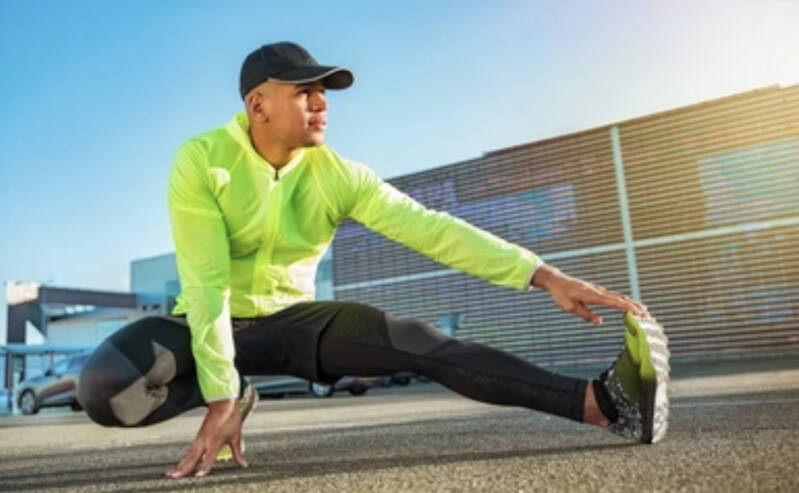Our bodies need mobility and flexibility in order to move and perform daily tasks, stretching allows us to improve this. There are 3 main types of stretch; in this blog entry, I will be discussing what they are, their benefits and when you should and shouldn’t be doing them.
What is a stretch?
A stretch is an exercise performed to an isolated or group of muscles, encouraging the muscle fibres to part. This allows temporary lengthening of muscles, proving greater activation efficiency and helps to keep them healthy, strong and flexible. When you perform a stretch, you feel tension in your muscle, this is the signal from the muscle to the brain saying the muscle is at full stretch capacity. It is possible to improve your stretch range capacity with various stretching techniques.
Benefits of stretching pre and post workout include:
-
-
- Increased mobility and range of motion
- Increased ability to perform daily tasks
- Greater facilitation of muscular activation
- Reduces risk of injury
- Promotes recovery
-
However the type of stretches you do at the beginning or your workout should not be the same as the stretches you do at the end. It is also important to be aware of the risks associated with overstretching. Once you feel the tension under the muscle it is extremely important to not push past the limit too quickly as this can actually cause injury. It is also important to note that sometimes muscles will be tight as a protective measure due to the surrounding area lacking in strength or stability.

Static stretches
Firstly we have static stretches, of which you are probably most familiar with. These stretches are held statically for between 10 seconds and 3 minutes and can be used for both maintenance and development of muscle mobility and flexibility. There are many variations of these stretches and intensity can be increased for a deeper stretch. The majority of static stretches can also be done both standing or seated, whichever is more comfortable for you.
Examples of static stretches include but are not limited to: quad stretch, hamstring stretch, calf stretch, side bends, bicep stretch, tricep stretch, shoulder stretch, chest stretch and back stretch.
- When should you be performing static stretches?
Static stretches should be performed at the end of your workout after your cool down. This helps muscle fibres to relax and makes you feel less stiff during recovery. Performing your stretches before your cool down can result in blood pooling. This is where the heart rate is still high but the blood pressure is not high enough for the deoxygenated blood to travel back from the feet to the heart. This results in uneven blood distribution and puts you at risk of becoming light headed.
It is also beneficial to perform static stretches on days of rest to promote recovery; stretching during this time prompts lactic acid build up to leave your muscles. This also helps to ease the stiffness you may feel on rest days.
Static stretches should NOT be performed before your workout, especially before resistance training! You are parting your muscle fibres with a static stretch, they are temporarily weakened and more vulnerable as a result. If load is then applied during this time, your muscles are at a much higher risk of tearing.

Dynamic stretches
Dynamic stretches are stretches performed through movement. They provide an instant increase in the range of motion of your joints, tendons, ligaments and muscles. They also encourage synovial fluid to move to your joints (lubrication for your joints), providing them with increased mobility.
Some examples of dynamic stretches include: leg swings (forward and back/side to side), hip rotations, open and close the gate, arm rotations, torso twists, high kicks, hamstring stretch to squat, ankle rotations, wrist rotations and finger extensions. Dynamic stretches are performed for 8-10 reps, starting with a smaller range of motion and slowly increasing it as you progress through the reps.
- When should you perform dynamic stretches?
I would recommend performing dynamic stretches prior to your workout. Incorporating them regularly to the beginning of your warm up significantly reduces your risk of injury. They temporarily increase your mobility, preparing your body for the higher intensity movements of your main workout. Dynamic stretches can also be performed whenever you feel stiff; they will help wake your body up and improve concentration levels.
It is important to note when performing these stretches not to increase the range of motion too quickly as this could have an adverse effect and cause damage. Let’s use the leg swing as an example. Find something to hold for balance, stand on one leg and gently start to swing the other leg back and forth. Keeping your chest up and core engaged, you want the movement to be coming from your hip as this is the joint that is being mobilised. Pay attention to the light tension you feel in your hamstring and hip flexor also; that is where you stop the forward swing and bring the leg back and visa versa. As you progress through the reps you will feel your range of mention gradually increase.

PNF stretches
PNF (or Proprioceptive Neuromuscular Facilitation) stretches are static stretches with assistance. PNFs stretch deep into the muscle fibre and can be excellent for developing muscle flexibility and fixing imbalances.
Due to the intensity of these stretches, it is important to only have these performed by a professional who has been trained in the administration of PNF stretches. It is also important to never perform PNF stretches before your workout, particularly resistance training.
In Conclusion
Stretching is a necessity when considering the longevity of your mobility and daily functionality of your body. I advise that if you aren’t already stretching, to begin to incorporate stretching into your daily routine. Remember that we all have our own physical abilities and limitations and it is important when stretching to work at a level that is comfortable to you.
Add comment
Comments